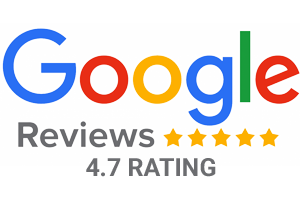Personal Injury Law
Time, Place, and Manner Restrictions on Speech
The First Amendment of the U.S. Constitution enshrines the “right of the people peaceably to assemble and to petition the Government for a redress of grievances.” It also prohibits the Government from “abridging the freedom of speech.” While the right to say anything at any time is not absolute, Courts recognize that some types of speech are more important than other types to preserve a democratic system. “Political speech,” such as spirited and even harsh criticism of government policies or politicians, is highly valued under the First Amendment and can only be restricted under extraordinary circumstances.
At the same time, “speech” and “action” are not the same thing. “Speech” is about communicating ideas. “Action” may include the exchange of ideas, but could also include other elements that are not protected by the First Amendment. A newspaper engages in political speech by publishing an editorial calling for a politician to be impeached. An individual who spray-paints “IMPEACH” on the door of that same politician is expressing the same idea, but is also engaging in actions for which they are not shielded from legal consequences.
Most political protests involve some combination of speech and action. To navigate what can and cannot be regulated, the U.S. Supreme Court distinguishes between the “content” of speech and the “time, place, and manner” in which that speech is expressed. Any restrictions on the expression of ideas must be “content-neutral” – that is, they must apply across the board to all actions, whether those actions express ideas that are favorable or unfavorable to the government. The restrictions must also be “narrowly tailored” to serve a significant government interest, and must keep open other means for citizens to express the same ideas.
Example 1: The City of Oakland allows a demonstration by a group of citizens in a city park. The demonstrators hold signs in support of the city’s police department. Another group of citizens gathers across the park and holds signs calling to defund the city’s police department. The City tells the second group that they must disperse before dark. This violates the First Amendment rights of the second group, because the City is not “content-neutral” in its approach. Both groups are engaged in the exact same action: holding signs in a public place. The City’s only basis for singling out one group is the content of its political message – that is, its “speech.”
Example 2: San Jose passes a city ordinance banning the use of glitter paint on any sign at any public gathering. Two groups of demonstrators face off at the public square. The first group holds signs calling for public schools to stay closed indefinitely during a pandemic. The second group calls for all schools to immediately reopen. Both groups include people who have made signs with glitter paint. All people with such signs are cited, fined, and their signs are confiscated. While the City’s ordinance is “content-neutral,” the City likely cannot show that its restriction serves a “significant” government interest. Therefore, its restriction on certain actions unconstitutionally limits the free speech of both groups.
Example 3: The State of California passes a law banning public school students from wearing clothes with any slogans during the school day. This includes political slogans, commercial slogans, and song lyrics. The legislature rationalizes this law in its preamble by emphasizing the need for students to learn in an environment free from distractions. There are no restrictions on students discussing political and other issues among themselves during lunch and recess. This law is content-neutral because it does not pick sides. Arguably, it is narrowly tailored to protect a significant government interest. It allows other methods for students to express themselves. This restriction likely complies with the First Amendment.
Example 4: San Joaquin County imposes a regulation banning billboards with more than five words if they are visible from the highway. The rationale for this regulation is to prevent drivers from being distracted and to limit traffic fatalities. An environmental group rents a billboard that is visible from the highway. It says: “Respect wildlife. Protect California grizzlies.” A hunting group rents another billboard visible from the highway. It says: “Hunting is our livelihood. Ease restrictions on hunting.” A television station rents a billboard visible from the highway which says: “Channel 8 News: traffic, weather, and current events.” The County fines the billboard company for displaying the hunting group’s and television station’s signs, causing them to be removed. The County allows the environmental group’s sign to stay up. The County’s regulation is content-neutral; it serves a significant government interest; and it allows other channels for the hunting group and the television station to promote their message – by using fewer words, by renting billboards that aren’t visible from the highway, or by holding rallies, writing editorials, publishing a website, or taking out radio or television ads.
If you care about the world around you, you probably have something to say about it. Your right to say what is on your mind is a cornerstone of a functional democracy. If you think this right has been infringed, contact a civil rights attorney at Spencer Young Law today for a free consultation.






